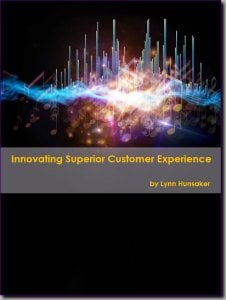 If the “customers’ jobs-to-be-done” concept is becoming embraced as essential for successful innovation, why is it largely ignored for customer experience research? Customers’ jobs-to-be-done (desired outcomes) are the customer’s viewpoint of functional and emotional needs to be fulfilled. Hence, the solution a firm sells is a means-to-an-end, simply a tool meant to enable the customer’s desired outcome from the points of need awareness through need extinction.
If the “customers’ jobs-to-be-done” concept is becoming embraced as essential for successful innovation, why is it largely ignored for customer experience research? Customers’ jobs-to-be-done (desired outcomes) are the customer’s viewpoint of functional and emotional needs to be fulfilled. Hence, the solution a firm sells is a means-to-an-end, simply a tool meant to enable the customer’s desired outcome from the points of need awareness through need extinction.
“For any given job, customers collectively apply 50 to 150 metrics to measure how well the job is getting done”, says Anthony Ulwick in his book What Customers Want. “Only when all the metrics for a given job are well satisfied are customers able to execute the job perfectly. Figure out which of the 50 to 150 outcomes for a given job are important and unsatisfied and then systematically devise a few ideas that will better satisfy those under-served outcomes.”
 Good customer-jobs-to-be-done research for innovation purposes reveals precise customer wording for measures of satisfaction and promoter behavior. What better way can there be to craft the most meaningful monitoring surveys? Start with the customers’ desired outcomes as the survey questions. You may not need to ask customers specific questions about product and service features if you have well-correlated data from your initial customer experience research. This research should focus on the linkages between the elements of your organization’s solution as a means-to-an-end and the customers’ desired outcomes.
Good customer-jobs-to-be-done research for innovation purposes reveals precise customer wording for measures of satisfaction and promoter behavior. What better way can there be to craft the most meaningful monitoring surveys? Start with the customers’ desired outcomes as the survey questions. You may not need to ask customers specific questions about product and service features if you have well-correlated data from your initial customer experience research. This research should focus on the linkages between the elements of your organization’s solution as a means-to-an-end and the customers’ desired outcomes.
Use of customer-jobs-to-be-done findings for all customer experience management activities could solve these widely reported challenges:
- Different views across the organization of what customers want.
- Disagreement between business units on customer metrics.
- Balancing low respondent fatigue and high response rates.
- Broken linkages between survey results and business results.
- Large gaps in customer and supplier viewpoints of delivering customer-centricity.
Monitoring customers’ desired outcomes is a lot safer than monitoring satisfaction with features. Astute managers know that over-focus on satisfaction can lead to blind spots unless it’s combined with diligent monitoring of the competitive landscape. However, “it is important to remember that the customers’ outcomes are stable over time,” says Ulwick. “What does change is the degree to which these outcomes are satisfied by new technologies and product and service features.”
 Indeed, monitoring of customers’ desired outcomes may be more eye-opening than traditional satisfaction surveys, as focus on outcomes maintains management’s attention on competition as the customer sees it. Customer choice is not always among similar-feature-offerings, but rather, it is among similar-outcome-offerings.
Indeed, monitoring of customers’ desired outcomes may be more eye-opening than traditional satisfaction surveys, as focus on outcomes maintains management’s attention on competition as the customer sees it. Customer choice is not always among similar-feature-offerings, but rather, it is among similar-outcome-offerings.
In a 2009 CMO Council study, Turning Customer Pain Into Competitive Gain, two-thirds of companies self-report they don’t have a high commitment to customer listening, and the same number don’t look for ways to convert problems into opportunities. Clearly, a competitive advantage exists for organizations that monitor the right things right, and take action accordingly.
 See the e-handbook Innovating Superior Customer Experience for step-by-step guidelines, diagrams and templates covering more than 30 best practices for in-depth customer knowledge and innovation applications, as well as creativity tools and internal innovation techniques.
See the e-handbook Innovating Superior Customer Experience for step-by-step guidelines, diagrams and templates covering more than 30 best practices for in-depth customer knowledge and innovation applications, as well as creativity tools and internal innovation techniques.
Click here for podcast version: Customer Experience Research & Customer Outcomes (3:38)
Related articles:

